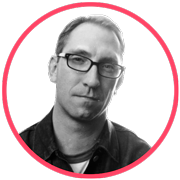
One of my most brightest memories from my first year of living in Jerusalem was the road from a police station to the Old City. I saw there for the first time an impoundment lot with torn up buses that were blown up by suicide bombers. I imagined being a passenger on one of these buses and that picture surfaces in my memory to this day.
It’s that same feeling that I wanted to convey with the series, “Architecture of an Existential Threat,” by placing the viewer in an empty space and making them think. Becoming familiar with the work of Richard Ross, I began to more deeply explore the shelters in Israel. My interest only increased when I found out just how many of them are on both sides of the Arab-Israeli conflict.
At first, I wanted to depict these shelters as architectural structures, but with time I understood that they are something larger for Israelis. Thousands of years of persecution and oppression have made them a part of their national identity.
{“img”: “/wp-content/uploads/2014/09/bomb_01.jpg”, “alt”: “an Israeli bomb shelter in the photo series of Adam Reynolds” },
{“img”: “/wp-content/uploads/2014/09/bomb_02.jpg”, “alt”: “an Israeli bomb shelter in the photo series of Adam Reynolds” },
{“img”: “/wp-content/uploads/2014/09/bomb_03.jpg”, “alt”: “an Israeli bomb shelter in the photo series of Adam Reynolds” },
{“img”: “/wp-content/uploads/2014/09/bomb_04.jpg”, “alt”: “an Israeli bomb shelter in the photo series of Adam Reynolds” },
{“img”: “/wp-content/uploads/2014/09/bomb_05.jpg”, “alt”: “an Israeli bomb shelter in the photo series of Adam Reynolds” },
{“img”: “/wp-content/uploads/2014/09/bomb_06.jpg”, “alt”: “an Israeli bomb shelter in the photo series of Adam Reynolds” },
{“img”: “/wp-content/uploads/2014/09/bomb_07.jpg”, “alt”: “an Israeli bomb shelter in the photo series of Adam Reynolds” },
{“img”: “/wp-content/uploads/2014/09/bomb_08.jpg”, “alt”: “an Israeli bomb shelter in the photo series of Adam Reynolds” },
{“img”: “/wp-content/uploads/2014/09/bomb_09.jpg”, “alt”: “an Israeli bomb shelter in the photo series of Adam Reynolds” }
I first came here as a student — I was interested in international journalism and I traveled to the Middle East to gain experience. It always fascinated me. The majority of my work is devoted to Israel and Palestine.
Israel is a Europeanized country, but I was surprised by how so many people carry arms — soldiers, guards, settlers, urban residents.
The representatives of the Western and Eastern cultures know how to play up to the public. There’s so much international press in the countries of the Middle East that the residents of Israel and Palestine have long ago gotten used to exposing their lives to the camera lens.
{“img”: “/wp-content/uploads/2014/09/bomb_10.jpg”, “alt”: “an Israeli bomb shelter in the photo series of Adam Reynolds” },
{“img”: “/wp-content/uploads/2014/09/bomb_11.jpg”, “alt”: “an Israeli bomb shelter in the photo series of Adam Reynolds” },
{“img”: “/wp-content/uploads/2014/09/bomb_12.jpg”, “alt”: “an Israeli bomb shelter in the photo series of Adam Reynolds” },
{“img”: “/wp-content/uploads/2014/09/bomb_13.jpg”, “alt”: “an Israeli bomb shelter in the photo series of Adam Reynolds” },
{“img”: “/wp-content/uploads/2014/09/bomb_14.jpg”, “alt”: “an Israeli bomb shelter in the photo series of Adam Reynolds” },
{“img”: “/wp-content/uploads/2014/09/bomb_15.jpg”, “alt”: “an Israeli bomb shelter in the photo series of Adam Reynolds” },
{“img”: “/wp-content/uploads/2014/09/bomb_16.jpg”, “alt”: “an Israeli bomb shelter in the photo series of Adam Reynolds” },
{“img”: “/wp-content/uploads/2014/09/bomb_17.jpg”, “alt”: “an Israeli bomb shelter in the photo series of Adam Reynolds” },
{“img”: “/wp-content/uploads/2014/09/bomb_18.jpg”, “alt”: “an Israeli bomb shelter in the photo series of Adam Reynolds” },
{“img”: “/wp-content/uploads/2014/09/bomb_19.jpg”, “alt”: “an Israeli bomb shelter in the photo series of Adam Reynolds” }
The digital revolution seriously influenced the nature of the consumption of visual content and train our taste. Photos from events tell us more than articles on those very same themes. On the other hand, it has also raised people’s trustfulness — many accept any information as the true story.
Objective photography doesn’t exist — everyone has their own truth. Everything is subjective. It’s a very ambitious task to try to convey the whole essence of what’s happening in a matter of seconds. Every decision of a photographer is his subjective choice that influences the photo and its perception. The whole truth is in the eyes of witnesses. The most important thing for a photojournalist is to earn the trust of your audience and to be honest in telling the story.




